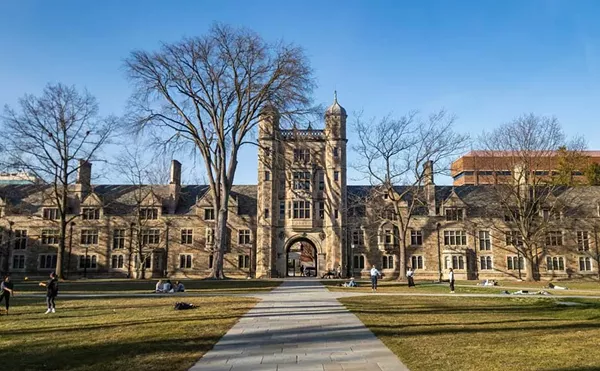Blunder: Abandonment of the Woodward Plan
When the cramped town of Detroit burned in 1805, Judge Augustus Woodward platted a new metropolis in its place, complete with spacious parks and broad avenues to help contain future fires. The plan was cut off at Adams Avenue when land north of the city was sold as farm lots in 1818. When the city obtained the Fort Shelby grounds in 1827, the Woodward Plan was officially abandoned and this area was platted as a simple grid. Afterward, every land speculator in the city was essentially free to draw streets wherever they wished. The result was a haphazard street grid with a lack of crosstown thoroughfares, and bottlenecks where Woodward's avenues met the speculators' narrow streets. Correcting these problems entailed widening and straightening roads by condemning and clearing private property, often after expensive and lengthy legal battles. Many of these road-widening projects were carried out at times when city leaders were debating the merits of building a costly subway system.

Audio By Carbonatix
[
{
"name": "GPT - Leaderboard - Inline - Content",
"component": "35519556",
"insertPoint": "5th",
"startingPoint": "3",
"requiredCountToDisplay": "3",
"maxInsertions": 100,
"adList": [
{
"adPreset": "LeaderboardInline"
}
]
}
]
Page 2 of 21






